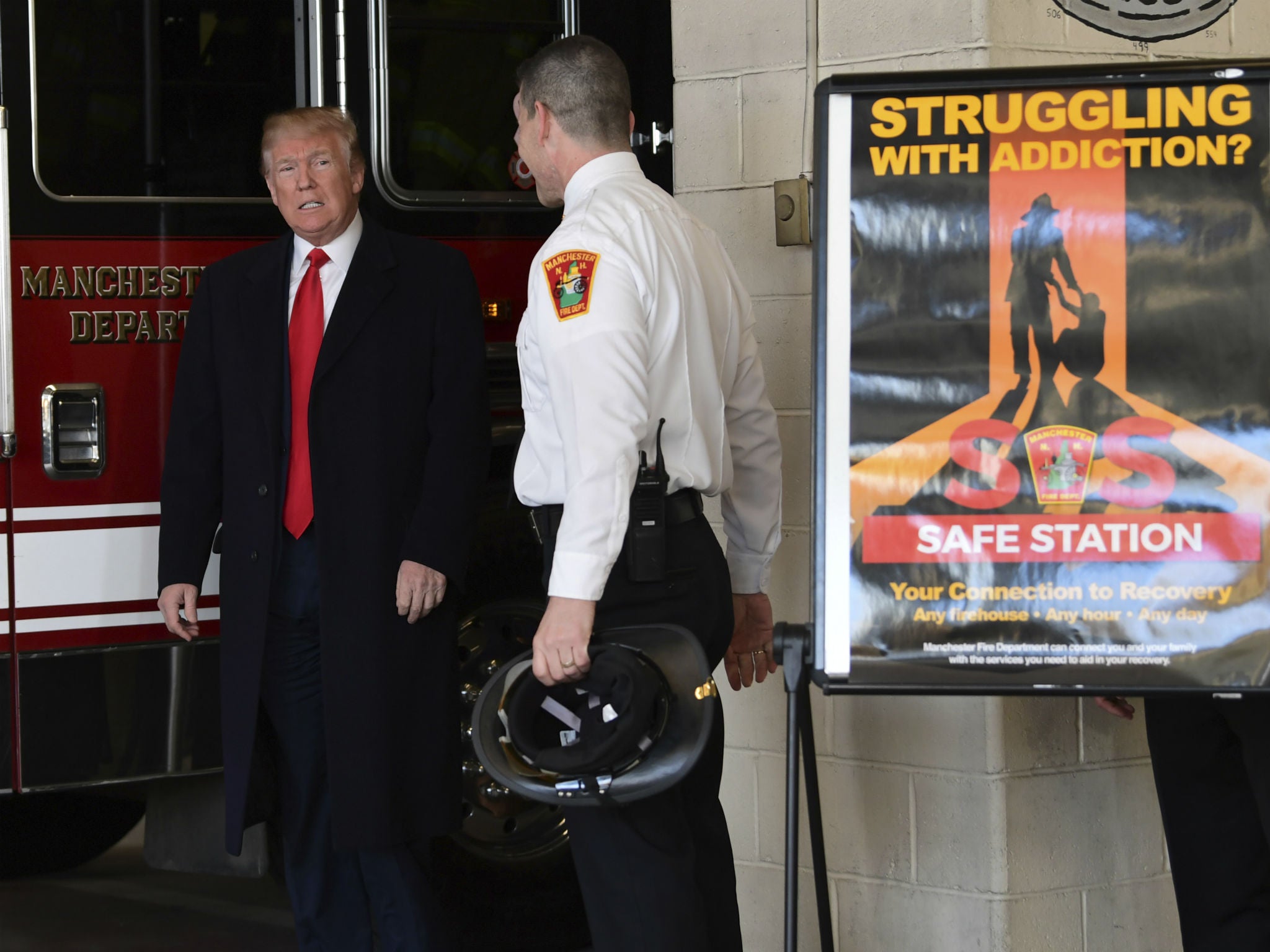Trump election support highest in areas with highest rates of opioid painkiller use, study reveals
Earlier research found president over-performed in areas with high drug, alcohol and suicide mortality rates

Your support helps us to tell the story
From reproductive rights to climate change to Big Tech, The Independent is on the ground when the story is developing. Whether it's investigating the financials of Elon Musk's pro-Trump PAC or producing our latest documentary, 'The A Word', which shines a light on the American women fighting for reproductive rights, we know how important it is to parse out the facts from the messaging.
At such a critical moment in US history, we need reporters on the ground. Your donation allows us to keep sending journalists to speak to both sides of the story.
The Independent is trusted by Americans across the entire political spectrum. And unlike many other quality news outlets, we choose not to lock Americans out of our reporting and analysis with paywalls. We believe quality journalism should be available to everyone, paid for by those who can afford it.
Your support makes all the difference.Support for Donald Trump in the 2016 presidential election was greatest in the counties with the highest rates of chronic prescription opioid use, according to a new study published this week in the journal JAMA Network Open.
The study found that Mr Trump received about 39 per cent of the 2016 vote in the 638 counties with the lowest rates of long-term (90-day supply or more) Medicare opioid prescriptions, but about 60 per cent of the vote in the 693 counties with the highest rates of long-term opioid use.
All told, on a scale from zero to 100, where zero indicates no correlation and 100 indicates perfect correlation, the relationship between chronic opioid use and the 2016 presidential vote scored a 42.
Maps from the paper illustrating the raw rates of long-term opioid use and the 2016 Trump vote share at the county level illustrate some of the correlation. Certain areas of the country, including parts of the mountain West and a wide swath of Appalachia, stand out on both maps. There are some areas of discordance, however, including much of the northern plains (low opioid rates, high Trump support) and deep South (high opioid rates, low Trump support).
The numbers don't at all suggest that opioid use was a causal factor in the 2016 presidential vote. Rather, "individual and county-level socioeconomic measures explained much of the association between the presidential vote and opioid use," the report found. Those measures included income, disability coverage, insurance and unemployment rates.
Still, correcting for those factors didn't remove the relationship between the Trump vote and opioid use entirely. "Adjusting for county-level socioeconomic measures in linear regression models explained approximately two-thirds of the association of opioid rates and presidential voting rates," the authors write. That last third remains something of a mystery.
These findings dovetail with some other research that's come out since the election. A December 2016 study found, for instance, that "Trump over-performed the most in counties with the highest drug, alcohol and suicide mortality rates." Again, much of that relationship could be explained by the prevalence of working-class voters and measures of economic distress.
Similarly, an analysis by the Economist found that measures of local health predicted much of the swing towards Mr Trump at the county level.
One thing that does seem clear is that Mr Trump was successful at appealing to voters from counties hit particularly hard by the opioid crisis, due in part to his hard-line stance on drug issues. Mr Trump has made law enforcement efforts, including his proposed border wall with Mexico, the centrepiece of his anti-drug policy agenda.
Most drug policy experts agree, however, that helping users get treatment, lessening the demand for drugs and reducing the harms associated with drug use are the best ways to combat the opioid crisis.
The Washington Post
Join our commenting forum
Join thought-provoking conversations, follow other Independent readers and see their replies
Comments